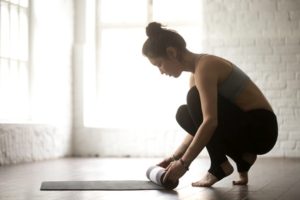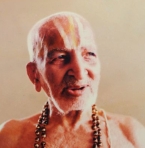
“In the traditional practice, people are met as individuals. Each person is taught progressively according to their own readiness. A relationship is cultivated, and the practice goes inward.”
What does it mean to call something “traditional”?
It must have existed for a long period of time, it must have been studied by many people, it is considered a benchmark, and no one in particular left its mark or brand on it. And importantly, it is habitually done as a repeated practice.
To put it into context, my first yoga lesson was in a gym – and it was all about the postures and keeping up with the teacher. What got me ‘hooked’ was the deep relaxation that I experienced in Shavasana and the challenge of the postures (this was a beginner’s class!). Having been always active and quite strongly willed with regards to achieving and over-achieving academically as well as physically, I was puzzled by how much I struggled through a sequence where other people just seemingly flowed through. And I was determined to uncover the magic!
Mind you, I wasn’t interested in tradition – I just wanted to get better! Instead, I got humbled. Over and over again – sometimes leaving the class at the end with tears in my eyes, not understanding why I couldn’t fold, bend and jump like others.
And then it all changed when I delved deeper into yoga (not just the postures but the meditation, the breathwork and the philsophy) and discovered the magic of the traditional way of practicing yoga: as a self-practice with the guidance of a teacher.

Tirumalai Krishnamacharya
This approach goes back to the roots of Krishnamacharya who lived from 1888 to 1989 and who has been a great influence on many lineages of modern yoga. Krishnamacharya stressed that the yoga practice was unique to the individual, which means that what postures you do, how you progress and how long you practice, is an individual journey.
This approach means that you follow your own breath and practice and the teacher is not leading the whole class but giving you cues and adjustments individually. The beauty of this practice is the serenity that comes with practicing quietly and being able to keep your breath and your gaze point in sync with your own practice. It is essentially a private class in a group setting!
And while this is liberating and empowering, a lot of people hesitate right here as they are afraid they can’t get up so early, won’t memorise the sequence or won’t practice as dedicated as they do in a group class. You will quickly find out that all these fears are unfounded and you will look forward to a time when you can practice quietly, being guided by a teacher and be in a community of like-minded people.
 The key is that you start small and short: Knowing the Sun or Moon salutation is the only requirement to attend this class – and a willingness to be taught and to learn – even if that means being taken back to the basics.
The key is that you start small and short: Knowing the Sun or Moon salutation is the only requirement to attend this class – and a willingness to be taught and to learn – even if that means being taken back to the basics.
However, if you keen to have a personalized sequence with photos/pictures, individually designed for you, I can meet with you one-on-one for a 30 min consult and private class.
The important part is that for the first few months, you stick with a simple practice that is easy to remember and has a basic approach. This is when the practice becomes truly magical and meditative as you focus internally. Rather than being preoccupied with how to do the postures, you become aware of the subtleties of the posture and the energetic connections. The entire practice goes deeper into the subconscious level.
Once you have memorized your sequence and feel comfortable with the postures, the teacher will give you additional postures/sequences to add on to.
Practicing in this traditional way also allows you to maybe practice a bit longer on some days and on other days you go more gently and restorative. This natural variation prevents injury, trains your body to listen and creates internal awareness.
Importantly, you don’t need to be flexible or ‘good’ at yoga to begin – the practice is the biggest teacher!
I will be introducing this traditional approach to Yogita Yoga and we will start with one day a week in the morning. The first class is on Thursday, October 24.
Doors will open at 6:30 am and you can come and start your practice then or drop in any time (the latest start would be 8 am). All that are present will come together for the beginning chant at 7am. You can stay for the entire practice period until 8:45 am or practice only for half an hour or meditate. There will be no talking amongst each other, the teacher may give quiet adjustments or brief verbal instruction to the individual student. Practicing in this way gives you focus and you can develop your sequence in your own pace and if necessary, stay a bit longer in the postures that are challenging – or the teacher may give you a modification that is achievable for you.
The ‘reward’ for practicing quietly first thing in the morning is a calm mind and a deepening of the practice from the inside out. It is truly a way to still the fluctuations of the mind.
On moon days (full or new moon), there will be chanting and a satsang (lecture and question and answer time) at 7:30 am.

